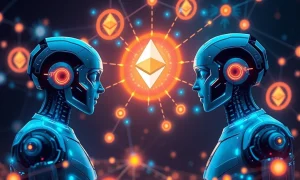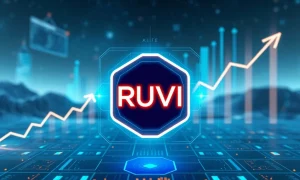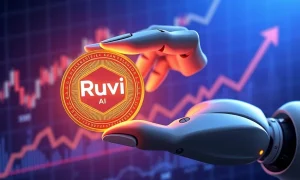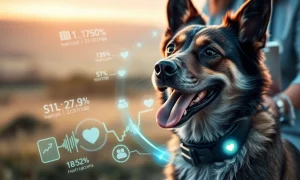The landscape of visual content creation has undergone a profound transformation. Businesses and entrepreneurs constantly seek innovative ways to produce engaging visuals quickly and cost-effectively. Thankfully, **AI image generation** offers a revolutionary solution. What once demanded extensive hours of manual design now takes mere seconds. Smart tools empower anyone to convert abstract ideas into stunning, high-quality images. This article explores how AI began with basic designs and advanced to produce lifelike results. From simple lines to rich, intricate details, the journey has been both rapid and truly amazing. Let us explore the pivotal steps that brought us from rudimentary pixels to digital perfection.
The Genesis of AI in Visuals: Early Steps in AI Image Generation
In its humble beginnings, computer graphics were quite basic. Early computers could only produce blocky, pixelated images. These graphics were rudimentary and lacked intricate detail. Artists and developers faced significant challenges to make anything appear visually appealing. As technology steadily improved, so did the quality of these digital images. Basic drawing tools were gradually replaced with more advanced programs. Crucially, AI slowly began to assist machines in understanding patterns within images. This initial pattern recognition laid the groundwork for future advancements in **AI image generation**. These early efforts, though simple, marked the first steps toward automated visual creation.
Deep Learning’s Transformative Impact on AI Image Generation
The advent of deep learning marked a significant leap forward for image creation. AI models could now learn from vast datasets of images. Consequently, they recognized shapes, styles, and colors with unprecedented accuracy. This capability allowed machines to build more realistic and detailed images. Suddenly, AI models created pictures that looked hand-drawn or even like real photographs. This shift represented a key turning point in the evolution of AI art. Specifically, **Convolutional Neural Networks (CNNs)** became instrumental. CNNs excel at processing pixel data, identifying hierarchies of features from edges to complex objects. This deep understanding of visual data dramatically enhanced the capabilities of **AI image generation** systems.
The Rise of Generative Adversarial Networks (GANs)
Generative Adversarial Networks, or GANs, revolutionized the field of **AI image generation**. Introduced in 2014, GANs employ two neural networks that compete against each other. One network, the generator, creates new images. The other, the discriminator, evaluates these images, trying to distinguish between real images and generated ones. This adversarial process forces the generator to produce increasingly realistic outputs. As a result, GANs became incredibly adept at creating convincing fake images. For instance, they could generate hyper-realistic faces of people who do not exist. This breakthrough opened new doors for synthetic media. Moreover, GANs paved the way for more sophisticated generative models we see today. They demonstrated the incredible potential of AI to create entirely novel visual content.
Diffusion Models and the New Era of AI Image Generation
More recently, diffusion models have emerged as a dominant force in **AI image generation**. Unlike GANs, diffusion models learn to reverse a process of gradually adding noise to an image. They essentially learn to denoise an image, step by step, until a clear, high-quality visual emerges. This method allows for exceptional control and fidelity. Prominent examples include:
- DALL-E: Known for its ability to create diverse and imaginative images from text prompts.
- Midjourney: Celebrated for its artistic and often surreal visual outputs.
- Stable Diffusion: An open-source model offering high customization and accessibility.
These models allow users to generate complex visuals simply by typing a description. This technique, known as prompt engineering, empowers users to guide the AI with remarkable precision. One impressive tool in today’s market is MagicHour AI image generator. It helps users make custom visuals quickly and efficiently. AI like this fundamentally changes how we approach design and visual storytelling.
Practical Applications: How AI Image Generation Transforms Industries
**AI image generation** has moved beyond experimental stages. It now offers tangible benefits across various sectors. Its applications are diverse and continuously expanding. This technology empowers professionals to achieve more with less effort.
Revolutionizing Graphic Design
Graphic design workflows are evolving rapidly with AI integration. Designers now receive invaluable support from smart tools. These systems suggest optimal layouts, propose harmonious color palettes, and even generate multiple design variations. AI learns from millions of past designs, understanding aesthetic principles and user preferences. This speeds up the ideation phase considerably. Designers can iterate on concepts much faster, focusing on creative direction rather than repetitive tasks. Ultimately, AI acts as a powerful assistant, augmenting human creativity.
Enhancing Marketing and Advertising
In marketing, personalized visual content is key to audience engagement. AI now helps create images tailored to specific personal tastes or demographic groups. Users can choose particular styles, colors, and themes. The AI then generates visuals that precisely match those choices. This capability is incredibly useful for dynamic marketing campaigns, social media content, and personalized branding efforts. Companies can connect more effectively with their target audience. Custom images made by AI are significantly faster and often more cost-effective than hiring traditional designers for every single variation.
Transforming Entertainment and Media
The entertainment industry greatly benefits from advanced **AI image generation**. Film studios use AI to create concept art, visualize complex scenes, and even generate virtual sets. Game developers leverage AI for rapid asset creation, populating virtual worlds with unique textures, characters, and environments. In virtual reality (VR) and augmented reality (AR), AI helps construct immersive experiences with unparalleled speed and detail. This technology significantly reduces production times and costs, allowing creators to focus on narrative and interactivity.
Innovating E-commerce and Retail
E-commerce platforms are increasingly using AI to enhance the shopping experience. AI can generate realistic product mockups, showing how items look in various settings or on different body types. Virtual try-on features, powered by AI image synthesis, allow customers to visualize clothing or accessories on themselves before purchase. This reduces returns and boosts customer confidence. Furthermore, AI creates diverse promotional materials, ensuring fresh and appealing visuals for online stores.
Challenges, Ethics, and the Future of AI Image Generation
Despite its remarkable progress, **AI image generation** presents several challenges and ethical considerations. Understanding these aspects is crucial for responsible development and deployment.
Ethical Dilemmas and Bias
One primary concern revolves around bias in datasets. If AI models are trained on biased data, they can perpetuate and even amplify societal stereotypes. This can lead to discriminatory or unrepresentative image outputs. Furthermore, the rise of deepfakes—highly realistic synthetic media—raises serious questions about misinformation and consent. Copyright issues also emerge, particularly when AI models are trained on vast amounts of existing art without explicit permission. Ensuring fairness and transparency in AI systems remains a critical task.
Computational Demands and Control
Generating high-quality images with AI often requires significant computational resources. This can be a barrier for smaller businesses or individual creators. While user control has improved dramatically with prompt engineering, achieving precise artistic intent can still be challenging. Fine-tuning the output to match a specific vision sometimes requires extensive experimentation and technical knowledge. Developers continue to work on making these tools more intuitive and efficient for all users.
The Evolving Role of Human Creativity
The future of **AI image generation** is not about replacing human artists, but rather augmenting their capabilities. AI serves as a powerful co-creator, handling repetitive tasks and generating diverse ideas. Artists can use AI to rapidly prototype concepts, explore different styles, and overcome creative blocks. The human element—originality, emotional depth, and critical judgment—remains indispensable. The collaboration between human ingenuity and artificial intelligence promises to unlock unprecedented levels of visual creativity.
Conclusion: A New Era of Visual Possibilities
The evolution of **AI image generation** has been truly remarkable. It empowers artists, educators, and businesses to create better content faster than ever before. From simple pixelated tools to highly intelligent generative systems, the progress is undeniable. AI can now transform complex ideas into stunning pictures with just a few descriptive words. However, this powerful technology also brings new questions about fairness, artistic integrity, and responsible use. As the technology continues to grow, we must ensure its wise and ethical application. The future of AI in image generation looks incredibly powerful, infinitely creative, and full of immense promise.
Frequently Asked Questions (FAQs) About AI Image Generation
Q1: What is AI image generation?
AI image generation involves using artificial intelligence models to create new images. These models learn from vast datasets of existing images and then generate novel visuals based on text prompts, sketches, or other inputs. This process allows for rapid creation of unique digital art, photographs, and designs.
Q2: How has AI image generation evolved over time?
Initially, AI could only produce basic, pixelated graphics. Significant advancements occurred with deep learning, especially Convolutional Neural Networks (CNNs), which improved pattern recognition. Generative Adversarial Networks (GANs) then enabled the creation of highly realistic images. Most recently, diffusion models have emerged, offering unprecedented control and fidelity in generating images from text.
Q3: What are the main types of AI models used for image generation?
The primary AI models for image generation include Generative Adversarial Networks (GANs) and diffusion models. GANs use a generator and a discriminator to create realistic outputs. Diffusion models learn to remove noise from an image iteratively, producing high-quality visuals. Both have distinct strengths and applications.
Q4: What industries benefit most from AI image generation?
Many industries benefit significantly. Graphic design, marketing, advertising, entertainment (film, gaming, VR), e-commerce, and architecture are among the top beneficiaries. AI speeds up content creation, enables personalization, and enhances visual quality across these sectors.
Q5: What are the ethical concerns surrounding AI image generation?
Key ethical concerns include potential biases in generated images due to biased training data, the creation of deepfakes for misinformation, and copyright issues related to AI models trained on existing artistic works. Responsible development and clear guidelines are crucial to address these challenges.
Q6: Can AI image generation replace human artists?
AI image generation is generally seen as a tool to augment, rather than replace, human creativity. It can automate repetitive tasks, generate ideas, and speed up workflows. Human artists retain the critical role of providing unique vision, emotional depth, and strategic direction, often collaborating with AI tools to achieve their artistic goals.






















